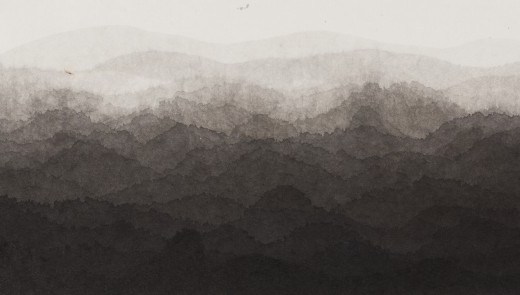The painter Prunella Clough began her career in the 1940s, and remained as prolific and productive in the years leading up to her death in 1999 (aged 80) as at any time before. Over the course of her career, she moved from figurative studies of dock and factory workers to abstracted evocations of the landscape. Yet ‘Landscape’ – with its bucolic, pastoral associations – is the wrong word. ‘Urbscape’, which Clough herself sometimes used to describe her chosen subject, comes much closer to the mark, conveying her enduring engagement with the industrial and the manmade.
Despite the range of subjects encompassed by Clough’s work, and the changes to both the industry and economy in Britain during this period, it has a rigour that ‘Unconsidered Wastelands’, showing at Osborne Samuel until 16 May, brings out beautifully. The exhibition title points to the source of this coherence. While other artists like L. S. Lowry have traced the impact of industrialisation on the British landscape, Clough’s oeuvre is distinctive for the way in which it consistently re-focuses attention on the overlooked, abandoned and discarded. While the precise forms might shift from a deserted gravel pit in a 1946 work, to a frayed section of old cord in one from 1992, Clough’s affiliation with waste and detritus remains constant.
That title is also a gently wry one. Most people routinely ignore the non-places at the edges of towns and industrial estates, but Clough looked at them very hard indeed. ‘Unconsidered Wastelands’ shows how the artist set this agenda from her earliest works. Untitled (1940), Study for Sea Composition (1940) and Breakwater (1946) explore the limit points of the land where it meets the sea, depicting bleak and isolated coastal zones. Untitled features a strange, totemic shape standing in front of distant waves that could have stepped out of a surrealist painting, together with a geometric section of collage. These works evoke the studies of mines and sea defences (not shown) that Clough made during and after the war. Although deserted, the objects in these beachscapes nonetheless have an uncanny air of self-sufficiency.
Clough’s spell of seaside surrealism was brief, but she maintained an interest in the lives of things and in the metamorphosis of objects. During the 1950s figures appeared in her paintings, often merging with their surroundings, as in Manhole II (1952) which shows a man seen from above, engulfed by a gaping black circle in the ground. The show includes three images that Clough made of women workers at the Peek Freans biscuit factory, who tend to the production line machinery with expressionless faces, their skin as pallid as their overalls. Soon, however, Clough’s fascination with the surfaces and structures of factories, and later still with their individual components such as a piece of mesh or a bundle of wire, took over.
‘Unconsidered Wastelands’ also reveals Clough’s formal invention and experimentation. As well as being an accomplished printmaker, Clough constructed small assemblages from found objects, and incorporated sections of collage into works on paper. In an illuminating essay from the accompanying catalogue, Gerard Hastings describes how Clough ‘created stencils from chicken mesh, perforated sheet metal and hole-punched cardboard.’ The effects of such working procedures can be seen in works like Mesh 3 (1981), where several grey shapes float against a background that looks as if it has been made by passing paint through a readymade lattice. The items that Clough found as she scoured her unconsidered wastelands were not simply her subjects, but also increasingly integral to the formation of her works.
In her canvases from the 1980s and 1990s, the found object reigns supreme. Fancy Goods Two (1992) contains a brightly coloured shape in blue, green and neon red, suspended over a ground covered in colours and patterns reminiscent of the shell-suits I used to covet as a child in the early ’90s. Clough derived many of the shapes and colours of these works from the plastic goods and trinkets sold in corner shops. It’s this sense of glitter and glister that led John Ball to write (in an essay reprinted in the accompanying catalogue): ‘magical as the earlier things are, I locate the full flowering of her genius, the great achievement of her “sideways” vision, in the later abstracts.’ ‘Unconsidered Wastelands’ leads the viewer to this conclusion subtly but convincingly, while showing how the ground for this efflorescence was laid through a long career.
‘Prunella Clough: Unconsidered Wastelands’ is at Osborne Samuel, London, until 16 May.
Related Articles
On the Outskirts: Lowry at Tate
‘Another Life, Another World’: Paul Nash’s Watercolours
Unlimited access from just $16 every 3 months
Subscribe to get unlimited and exclusive access to the top art stories, interviews and exhibition reviews.



















![Masterpiece [Re]discovery 2022. Photo: Ben Fisher Photography, courtesy of Masterpiece London](http://www.apollo-magazine.com/wp-content/uploads/2022/07/MPL2022_4263.jpg)
It’s time for the government of London to return to its rightful home